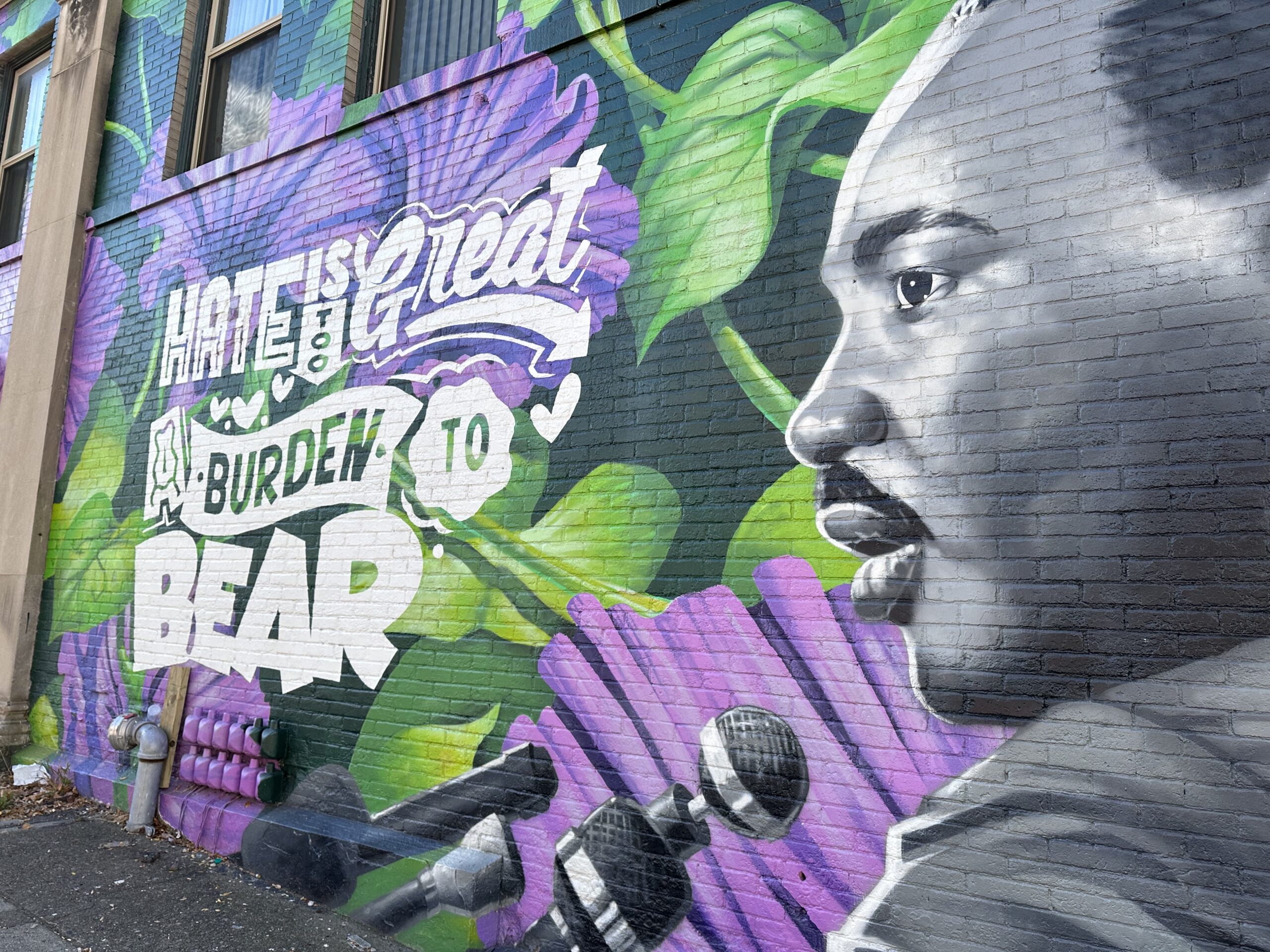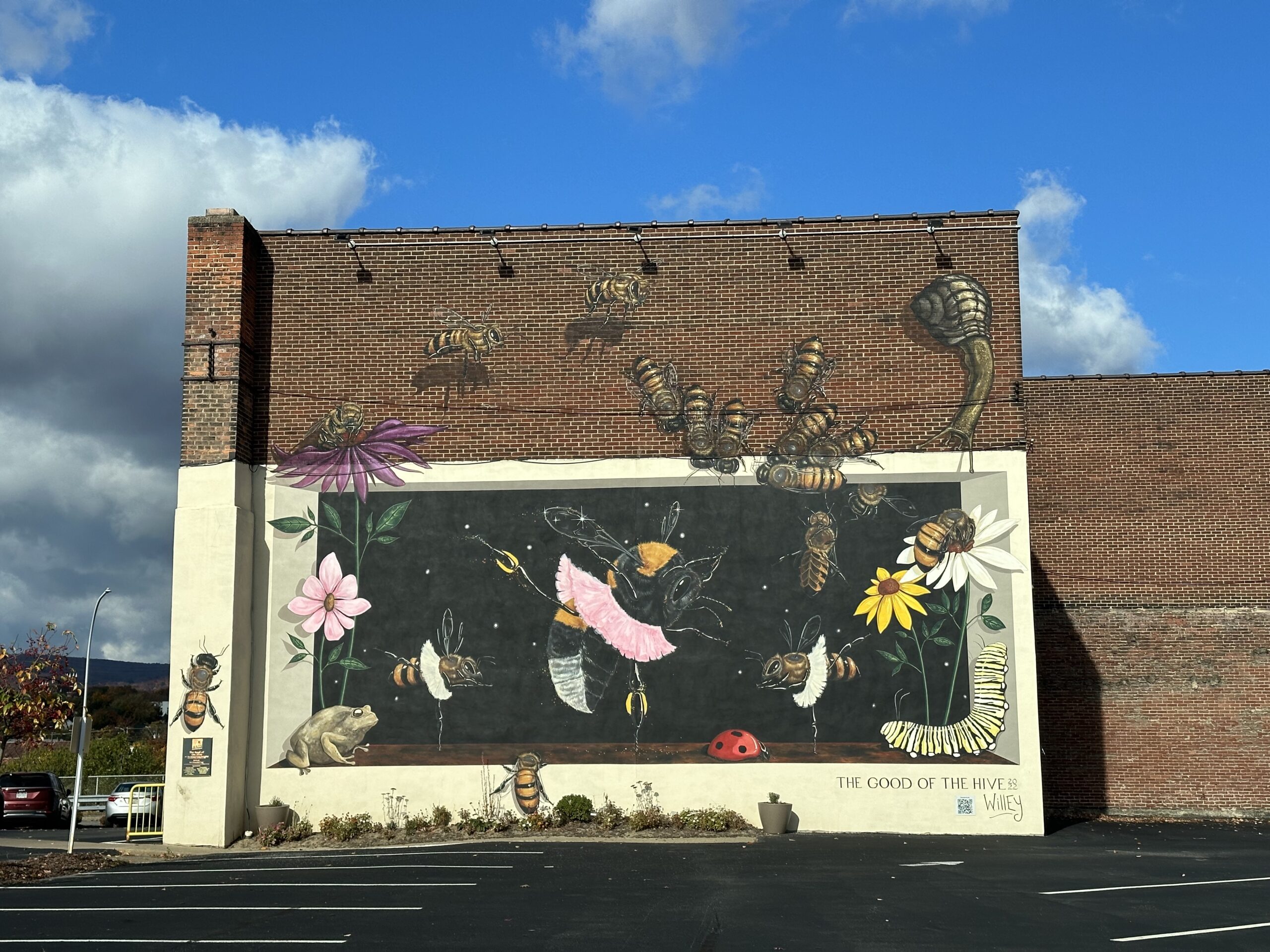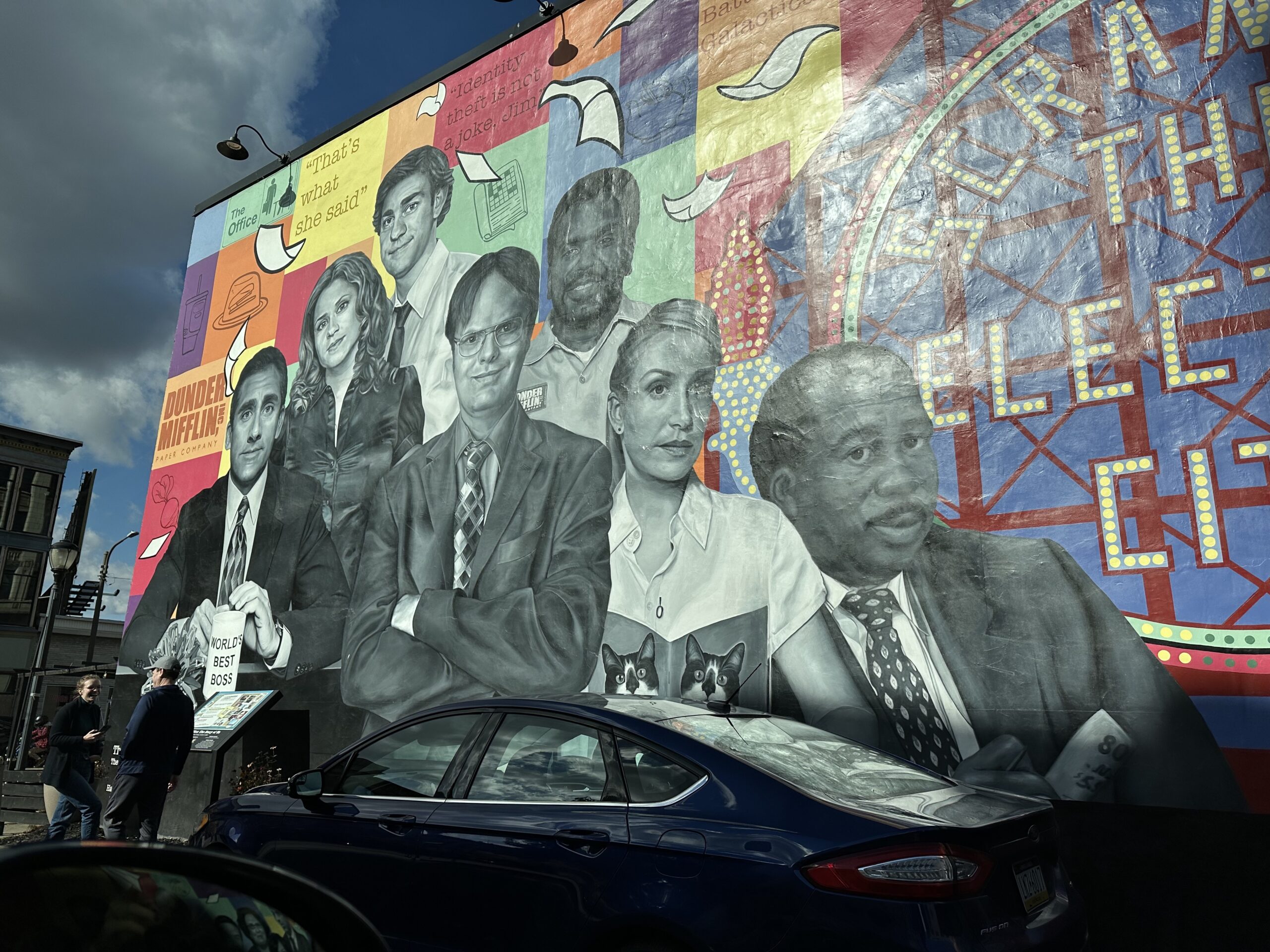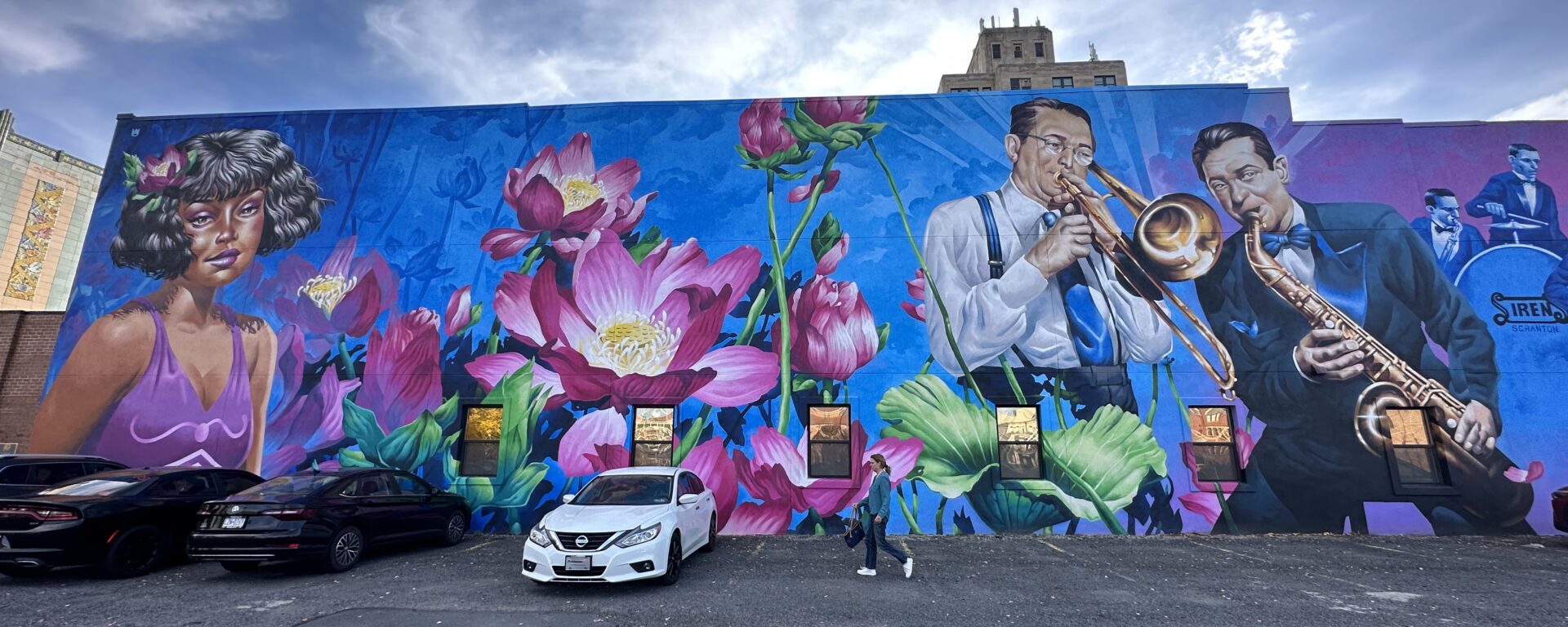Scranton has a rich history of immigration, particularly during the late 19th and early 20th centuries, when the city welcomed waves of Irish, Italian, and Eastern European immigrants seeking new opportunities.
Today, the city continues to attract newcomers from Latin America, Asia, and Africa, each adding their unique cultural contributions to the community. However, this evolving demographic landscape is not without tension, especially with the upcoming presidential election approaching.
As a critical swing state in the Nov. 5 election between Kamala Harris and Donald Trump, immigration has become a contentious issue in Pennsylvania’s political discourse. Concerns over job competition, cultural integration, and public resources have polarized opinions, highlighting the need for meaningful community discussions about immigration.
Public art has emerged as a powerful medium for these conversations, especially in Scranton, where murals throughout the city visually capture the experiences of the immigrant community.
One such mural, The Big Band by Eric Bussart, celebrates Scranton’s historic love for jazz and swing music. The mural, with its vibrant, larger-than-life figures, resonates with the cultural contributions of earlier immigrant communities and serves as a symbol of resilience, artistry, and unity. The Dream Mural, also by Bussart, offers a surreal and hopeful landscape of city life, symbolizing the aspirations of new immigrants and reflecting the city’s long history of welcoming those searching for a fresh start.
Chrissy Manuel, Director of Development and Communications at United Neighborhood Centers of NEPA, sees the murals as essential in fostering community dialogue.
“Art has the ability to provoke thought and conversation,” she says. “In Scranton, these murals tell the stories of our immigrant communities, inviting everyone to reflect on their own experiences.” For Manuel, each mural represents the resilience and contributions of immigrants, beautifying the neighborhoods and adding a shared identity.
In 2019, Scranton implemented an art tax that allocates a portion of public works funds to support local art projects, allowing artists to transform the city into a living canvas.
According to recent U.S. Census Bureau data, Scranton’s population has become significantly more diverse, with Hispanic or Latino residents increasing from 11% in 2010 to nearly 20% in 2020, alongside growing communities from Africa and Asia. This shift in demographics is mirrored in the city’s murals, which now celebrate immigrant contributions while addressing challenges like cultural integration and economic inclusion.
Julie Schumacher Cohen, Assistant Vice President of Community Engagement and Government Affairs at The University of Scranton, said Scranton’s demographic changes have influenced public sentiment.
“Scranton has by and large been more welcoming than some of the other areas of Northeastern PA,” she notes. But, she says, “Scranton still has a distance to go in becoming a fully welcoming city. It’s only in the last couple of years that translation and language access services are offered more regularly for immigrant communities in public and non-profit sector agencies.”

Rose Randazzo Pizzuto, Chairperson of Scranton Tomorrow Mural Arts, views these works as more than just decoration.
“The murals are a form of storytelling. Each piece reflects the culture, dreams, and struggles of the people in our community,” she said.

While political candidates have spoken on immigration’s impact on employment and resources, both positive and negative, Scranton’s art scene reminds residents and visitors of the human stories at the core of these discussions.
In an economic landscape where immigrants have played an increasingly significant role, recent census data shows that new immigrants in Pennsylvania have contributed to sectors like healthcare, agriculture, and education, supplementing the state’s labor force as its population ages.
Maureen McGuigan, Director of Arts and Culture for Lackawanna County, acknowledges the vital role of public art in representing Scranton’s immigrant heritage.
“Scranton has a rich history of immigration, and these murals are a modern reflection of that legacy. They remind us that our community is built on the dreams of those who came before us,” she said.


